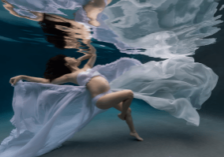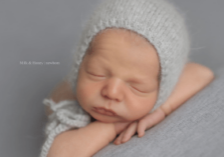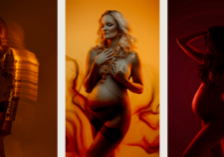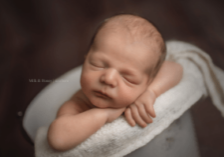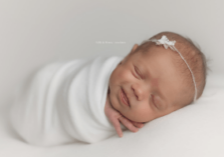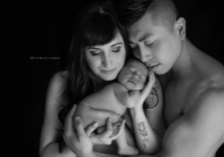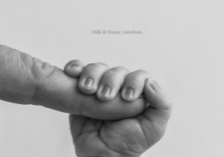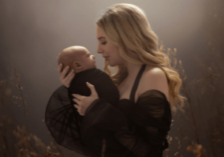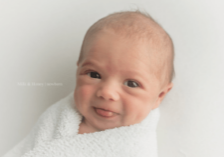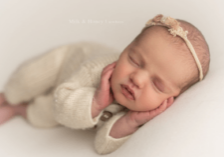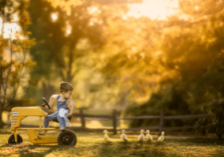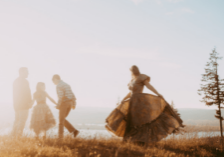Ep 109: The Power of Play: Pushing Yourself Out of Your Creative Comfort Zone with Craig Strong
Running a photography business can feel like a never-ending cycle of shoots, edits, and scheduling. When you start to lose your creative spark, you have two choices: Keep going as you are or step outside of your creative comfort zone.
While it might seem intimidating, there’s no better way to rediscover your passion than learning to play in your work. Find new subjects, try new tools, do something totally off-the-wall–whatever it takes to get your creative juices flowing again.
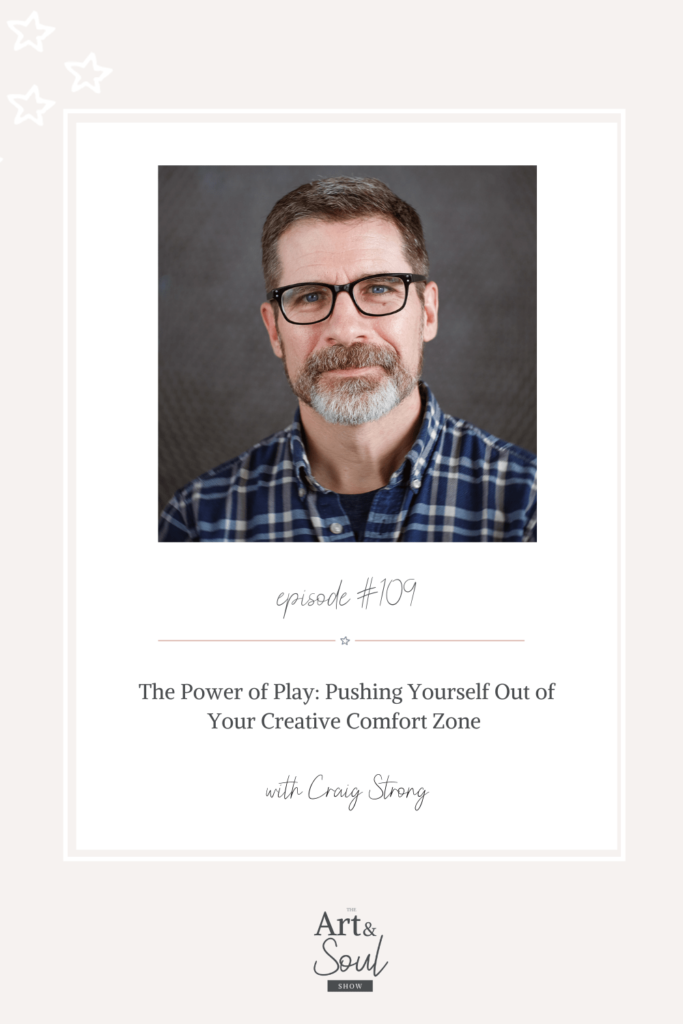
In this episode, I’m chatting about pushing yourself outside of your creative comfort zone with photographer and co-founder of Lensbaby Craig Strong.
Craig is sharing how he finds balance between his work, his passion projects, and his family life. We’re chatting about the relationship between creativity and fear and how you can find your creative confidence by doing things that scare you. Plus, Craig is sharing his advice for new photographers looking to turn their passion into a business.
What’s in this episode:
- How Craig got the idea for Lensbaby from his own experience as a photographer and consumer [3:08]
- How to get started with your first Lensbaby lens [7:07]
- Why we should keep looking for opportunities to experiment and play in our work [10:49]
- How to find balance between your creative work and your family life [14:50]
- How to shift your mindset and make self-care something you look forward to [18:25]
- How to reignite your creative spark when your work starts feeling mundane [21:27]
- How to find your creative voice and courage to stand out in a world where it feels safest to blend in [25:23]
- Finding your flow state and using it in your work and passion projects [30:44]
- Why it’s so important to force yourself out of your creative comfort zone [35:50]
- Craig’s advice for professional photographers who are just starting out [39:08]
If you’re feeling stuck within your comfort zone and want to reignite your creative spark, tune in to this episode.
SUBSCRIBE: iTunes | Spotify | Stitcher
Resources Mentioned
The Artist’s Way by Julia Cameron
Julia Cameron’s interview on The Moment podcast
Meet Craig Strong
Craig Strong is a photojournalist who co-founded Lensbaby, a line of creative lenses. He now works as Chief Creative Officer ensuring that Lensbaby provides fun, creative tools for photographers for many years to come. He lives in sometimes soggy, always beautiful Portland, Oregon.
Connect with Craig
Join the Lensbaby Unplugged Facebook group
Follow Lensbaby on Twitter and Instagram
Did hearing from Craig get you excited to play around in your own creative work and expand your comfort zone? You may also enjoy these episodes
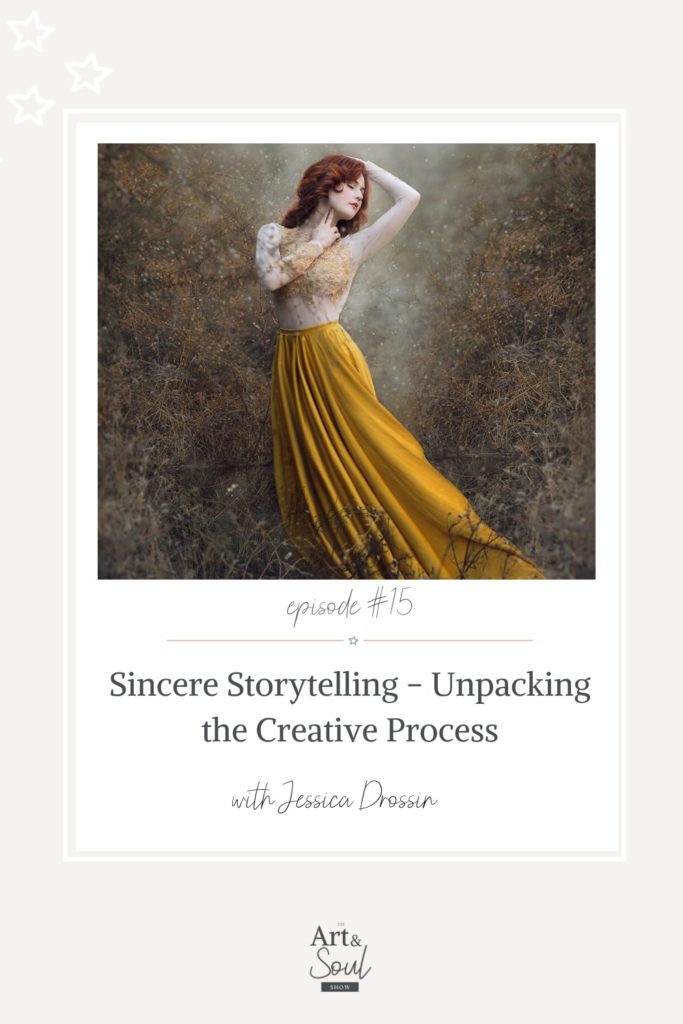
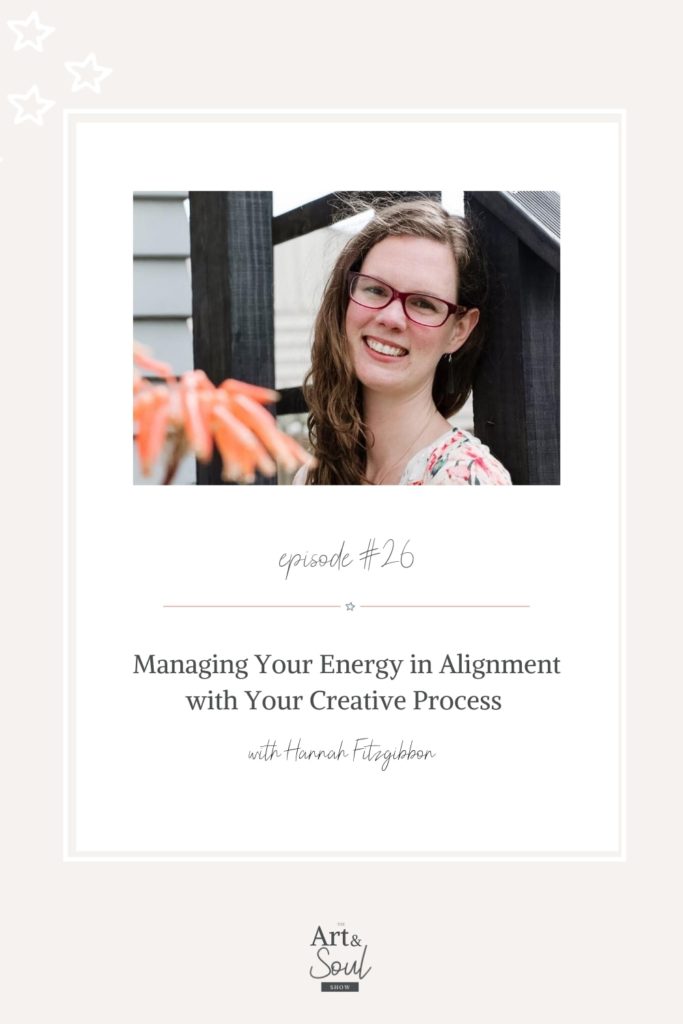
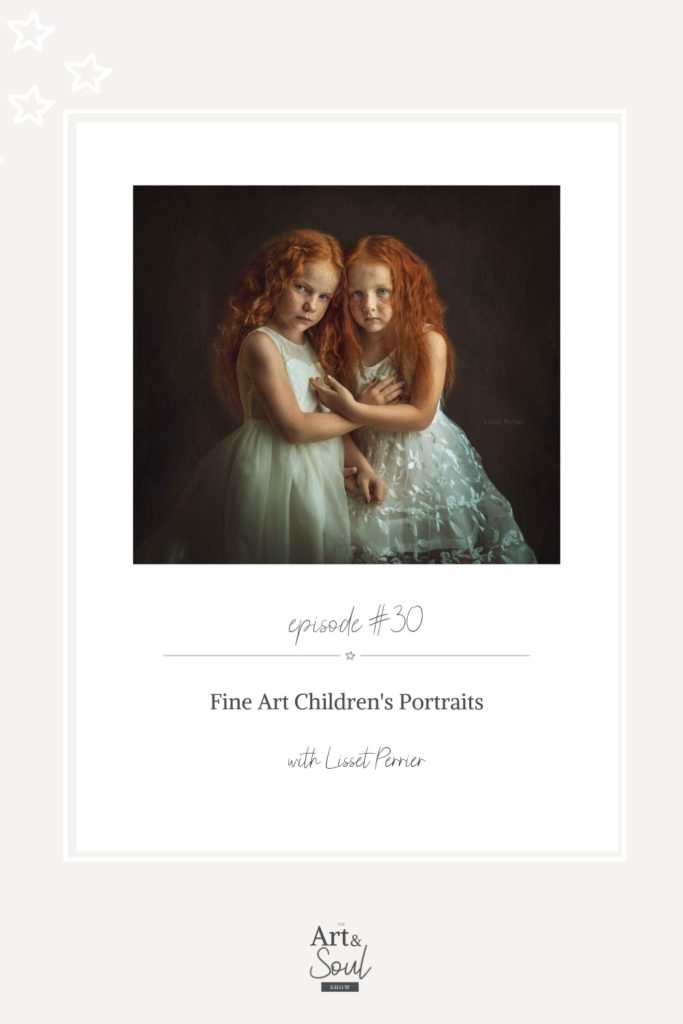
Transcript:
[00:00:00] Craig Strong: In different areas of my image that would keep the viewer engaged and tell a bigger story because it was rare that I got more than one image in the newspaper. And so I had to tell the entire story in that one image, and that’s disparate ideas. There’s a moment happening here and there’s a moment happening here, and it happened at the same time. And so if we can go in and say, OK, here’s a huge challenge for me, maybe because I don’t know it. I’ve never done it before and I have to learn it or because you’re counting on acknowledging or seeing a moment that is lined up with another moment and the composition is good and the lighting and everything comes together. Those are the encouraging things that I go, OK, I’ve still got it.
[00:00:48] Lisa DiGeso: Welcome to the Art and Soul show, where we dove into heart opening chats on photography, business life and that messy in between. I’m your host, Lisa DiGeso. So a mom, a photographer and entrepreneur, and I’ll be sharing honest conversations and advice for photographers with insight on mindset, entrepreneurship and creativity. The goal of this podcast is for you to be able to gain insights and strategies that will get you real results. Because let’s face it, having a photography business can be lonely, but it doesn’t have to be. This is the place you can go when you need a boost of encouragement, a kick in the pants and inspiration to pick up your camera. This is the art and soul show. Well, hello, and welcome back to the show, my beautiful and brilliant friend. So before we dive into this episode, I just want to remind you of how wonderful you are, how talented you are, and that no one sees the world the way you do. So if someone hasn’t told you that they’re proud of you lately, well, I’m telling you that I’m so proud of you, friend. I’m so proud of you for showing up and tuning in every single week, whether it’s driving in your car or sitting and editing and cleaning the house, or maybe you’re out for a walk. I love the time we get to spend together, and I appreciate you so much. So today I am chatting with Craig Strong, the owner and inventor of Lensbaby. I know Lensbaby, that Lensbaby. I’m so excited to have Craig share with you his wisdom and his insight on being creative. It’s such a juicy conversation. So without further ado, let’s dive in. Welcome, Craig.
[00:02:32] Craig Strong: Hi, Lisa. Good to be here.
[00:02:34] Lisa DiGeso: I’m so excited about our interview. So tell us who you are and what you’re passionate about.
[00:02:40] Craig Strong: Oh wow, those are big questions. I am Craig Strong and I. I am the co-founder of Lensbaby. I co-founded it in 2003 and my passion is learning. And if I can learn something new and apply what I learned before to something that feels like it’s a completely different field or a way of seeing or a way of living, I get excited about that.
[00:03:08] Lisa DiGeso: I love that. So I am absolutely dying because I’ve been a huge fan of Lensbaby for years. So tell me the Lensbaby story. How did it all begin?
[00:03:18] Craig Strong: Again, it all began with me being too cheap to buy a $1500 tilt shift lens from canon. And when I rented it, it was a pain I felt. I didn’t like how I had to wrap my brain around something that was designed for architectural photographers and food photographers to get everything perfect when all I really wanted was to go the opposite direction of what they were doing. I wanted to get something unique that I couldn’t get with another lens. And they were emulating in general. Photographers were using those lenses to emulate what you could do with a view camera, which generally straightened out the lines and then gave you what looked like an infinite depth of field, even though you might be an upright aperture or have a huge sensor or piece of film that you were shooting on. And I wanted to make something creative at the time in the mid-nineties that was being done in fashion, so you could get a 90 millimeter tilt shift or 45 tilt shift and crank it all the way and get the slice of focus. But again, it was, you know, in order to do that with those tools, I would have to pay for something that was way more lens than I needed to get something creative. So that’s where it all started. From there, I just started well. From there, I rented it several times, felt frustrated with the interface and not super satisfied with the images that I was producing. And in 2000, I went digital and I started putting every possible thing that could focus light or mess up light that was going through my Canon lenses at the time and do something that I couldn’t do with a normal lens. And I was kind of challenged to that with one of my studio partners who was shooting just amazing work on her 1960s, probably Diana camera, little medium format camera. She went out and bought like five or six and found one that had the exact look that she wanted the right light leaks in the right, you know, distortions to the images because a plastic lens like that has every time the mold makes that lens, it’s going to make it a little bit different. It’s going to have a little sink in the thick areas and it’s going to be. Perfect on the edges and who knows exactly what it’s going to do, but she went out and got this, she was shooting it on cross our shoes, cross processing or her film. So her colors were something I had never seen before. As far as a palette just totally lit, a fire under me is like, OK, what can I do? And several years later, when I went digital, I I realized, Well, I can experiment now. And so that’s where the roots of Lensbaby came was frustration and then possibility because I literally could put any lens on that digital camera. And instead of it being a dollar every click, it was free. I mean, yeah, I’d already made that investment.
[00:06:29] Lisa DiGeso: Exactly. I love that. I think it’s so interesting, especially since it wasn’t that time of going from digital or sorry film to digital and then sort of pioneering this new lens that, you know, helped so many and is continuing to help so many photographers explore their creativity. Because I think sometimes when you’re getting started, you look at you, OK, here’s a camera, here’s a lens, and this is what it’s supposed to look like. And you kind of opened it to like, you can make it look whatever you like, you whatever you want. Yeah, I think that’s just so Sony and such a gift to the photography industry.
[00:07:05] Craig Strong: So how did you find Lensbaby, if I can ask?
[00:07:07] Lisa DiGeso: Oh my gosh, I have been a photographer since I got my first camera in 2010. OK, so I’ve been shooting since 2010. And to be completely honest, I actually don’t own a Lensbaby. OK? And so that was part of my questioning today because I have been to your site so many times and I’m like, OK, I’m going to do it. But then I’m like, I don’t know which one to get. And I really wrote some of my questions today were along those lines of if someone were being, you know, introduced to Lensbaby, where would you start? Sure. What would you suggest?
[00:07:42] Craig Strong: Oh, goodness, yeah. There’s groups of people, a great community of people that are sharing their work. There’s a really enthusiastic community at Lensbaby unplugged on Facebook. If you’re on Facebook, there’s lots of podcasts and people shooting that are posting on YouTube. Lots of options. But I would say Lensbaby Unplugged if you’re on Facebook is a great first place to start.
[00:08:06] Lisa DiGeso: I love that. And which lens do you like, do you have a specific lens? It is like your baby that you would be like, this is the one you should start with.
[00:08:15] Craig Strong: I do. I suggest everybody, if you’re new to Lensbaby and you just want basically there’s so many options. I mean, you’re asking me about this specifically because like, Oh my gosh, I go to their website and there’s 30 products, and what am I going to do with this? And then you get one product and that has like 20 looks depending on the amount of tilt if it tilts and the aperture and the focal distance and the focus like, it’s crazy. So yes, there’s tons of options. And I would say the classic lens, maybe the sweet spot of focus with gradual blur as you move away from that spot and that is available in multiple lens babies. But the one that is the easiest to wrap your mind around that has. We’ve eliminated a lot of the options that can be mind boggling is the lens baby soul. So we’ve got a Soul 45 for APS-C and full frame, and we’ve got the sole twenty 22 for micro four thirds. So that’s 22 mm a micro four thirds and 45 millimeters for everything else. It has that sweet spot of focus kind of the way the human eye sees, except it’s a little more dramatic. So the center is very sharp and then it goes to vary. The focus goes kind of a focus vignette toward the corners and with the sole one of the options that we eliminated was the massive amount of tilt that the composer pro has a lot of people want. When they buy a composer, they will immediately put it on that camera, tilt it all the way because a normal tilt shift lens, if you don’t tilt it, it doesn’t do anything. And that’s true with Lensbaby. It just looks like a normal lens when you’re pointed straight ahead, but only on the edge optics on the sweet optics. If you tilt it all the way, especially if you tilt up or down, even on a full frame, your sweet spot is going to be completely off the frame. And so we eliminated that for the soul. So we’ve limited the tilt to be within the rule of thirds on full frame and then a little further on APS-C. But you’re able to keep that sweet spot even at full tilt, so you’re always able to find it. And so that’s a big part of it. We’ve also eliminated that aperture, so it’s a fixed f 3.5. So, you know, it’s always really bright and very crisp in that sweet spot. And then we’ve got Boka Blades, which are these textured blades that come in. So that’s nothing in a nutshell. Soul 45 and Soul 22.
[00:10:49] Lisa DiGeso: I love that while I definitely would be checking that out. I think I’ve been a working photographer with a photography business for like close to 11 years now. And I think, you know, I’ve spent so many years just going through things like shoot, edit, rinse, repeat, shoot, edit, rinse, repeat and so many clients that I think a lot of the time we forget to give ourselves permission to creatively play. And I think that’s so important that I think that Lensbaby really has encouraged that. I know that we have a number of our instructors that come and teach for our online retreats. And Joe is one of ours and I know she’s an ambassador for Lensbaby as well and just really encouraging to play, to play, to play. So, yeah. Was it your sort of need to play and explore that kind of helped contribute to the growth and the creations of your company?
[00:11:39] Craig Strong: Well, I’m sure, Lisa, you know, as a creative that that creative flow state, we’ll take it wherever it comes. Like, like literally if I’m if I pull out my journal and I don’t want to write. What else do I want to do here, do I want to draw, do I draw with pencils, colored pencils, pens, you know, what am I going to do here? What can I do to get something out of me that starts that ball rolling? And so that sense of play for me was twofold with Lensbaby. One is literally the day I came up with the squeeze mechanism, which was my first mechanical innovation that helped set the stage for Lensbaby. I literally was editing a wedding and I was looking for distractions. And so. Mm-Hmm. You know, and I think that in my creative process, I have to pay attention to that knowing that, hey, I might be up till 1:00 in the morning because I get distracted from this wedding that’s due tomorrow. But I also sometimes need to go in the direction that I’m attracted to. So knowing the consequences I went, I turned around and I saw with this idea in mind how do I get my medium format lenses to be able to tilt and block out the light on my SLR because it was film at the time for me? No, it wasn’t. I was digital, but I was both. It was. It was a nightmare to be both in that transition. But I looked and I saw my speed graphic camera that my sister had given me for graduation from high school, which was basically an ornament. I shot one roll through it, realized it was full of light leaks and never shot anything again. And instead of my medium format lenses which had about, you know, maybe not even a quarter of an inch between the back of the lens and the front of the the Mount on my canon cameras, all of a sudden I’m like, why has like a good inch and a half two inches in the back focus? Or probably would if I held it up? I wonder what kind of image that can produce. And so that plays that sense of, oh, I wonder, you know, what could I do with this? It obviously changed my career and changed my life and has allowed the team at Lensbaby to really provide you and so many other photographers with options that just weren’t out there before. And so I have to embrace that ADD, that I have to embrace that sense of OK, if I don’t get into the flow state in some way, my creative journey is going to be lessened. And so sometimes I just have to say, Oh, this is personal, but I have to spend time on it. And that was personal for me at the time, and it ended up becoming my career.
[00:14:20] Lisa DiGeso: I love that. I think for me, personal projects are always the first thing. Like, I run to companies and it’s the first thing that comes off my plate is my play and my creativity. And then I wonder why I’m frustrated and bogged down. And like I can’t have, I don’t have an idea to save my life. I don’t want to edit anything, and I just want to drink Pinot Grigio in the bathroom. So I. So I love that you have a company that just really embraces and celebrates that and helps photographers figure that out, too. So I think that for many of us, there really is a struggle with following your passion and diving in with both feet, but also staying grounded too. So remembering that we have family is in a light hashtag. I’m guilty. What advice do you have for creating balance as an entrepreneur and having a family life too?
[00:15:09] Craig Strong: Yeah, it’s it’s. I’ve been self-employed since ninety three and I, one of my best friends, had a company where he had to work every Saturday, and so he did Thursdays off and so early on got in the habit because I started shooting more and more weddings. And I realize I’m just never going to have a day off if I continue to grow my studio and weddings are a big part of that. So I started taking Thursdays off and that became a time for me. That and he was a fly fisherman, so we would go stand on a river together. And you know, we’d. Of an hour and a half, two hours driving to and from eastern Oregon. And so all of this was part of my meditative practice. And so standing in a river, casting a fly rod where every single cast is its own creative endeavor and those things became a meditative practice for me in the wintertime, which I’m not a cold weather fisherman. It’s more of a struggle, especially here in Oregon, where it’s great. But I do meditate. I spend a lot of time journaling and I do. One thing that I would highly recommend is reading the book or going through a workshop around the creative way.
[00:16:29] Lisa DiGeso: The artist Julie Cameron. Yeah, Julia.
[00:16:33] Craig Strong: Cameron. Julia. Yeah, and that process and hearing her, there’s a great Brian Koppelman has an unbelievable interview with her on his podcast The Moment, and I would look it up. It’s one of the best interviews I’ve ever heard in my life, and it’s the one I had. I had read her book The Artist’s Way, and I had not implemented a lot of the things. But since hearing that interview several times, I’ve listened to it. I’ve started doing artist pages. Yes, which is three pages in the morning, just whatever comes out, like just vomit on the pages. And so that’s been a huge part because when I’m done with that, not only do I often feel like a huge weight has been lifted for me, but I feel like there’s this, this momentum that I have going into the day and that’s that’s a big part of it.
[00:17:27] Lisa DiGeso: I love that I’ve heard of morning pages, and it’s so funny because I do. I have this resistance, and I don’t know if you’ve read War of Art. I just stopped myself and I’m like, What’s going on here? Why do I keep bumping against this resistance to it? So I will be implementing my morning pages and getting
[00:17:44] Craig Strong: Back to the same. You and I are in the same spot in that we do believe that life, the primary person I need to defend against undermining myself, against hurting the people around me, against everything is myself. Yeah. Like if I can get to know myself so well that I say, OK, I’ve seen this a hundred times before. How do I get past this hurdle? Try one different way. And one of those ways could be artist pages. Yeah. And so and a creative process. And so it’s always coming up from a different way to say, well, that used to work, but that no longer works here. So what else can I try?
[00:18:25] Lisa DiGeso: Yeah, I’m going to it. Share a little story. So recently I love it. I love going for walks every single morning, but I also live in Canada and it’s like the middle of the winter right now. And it’s been snowy and winter-like since probably mid-November. So I have a treadmill downstairs for 20 years, I have always called it the treadmill. I don’t like getting on it. And then I was like, You know what? I love walking. I need to change my attitude around this, and I’m like, OK, so how can I stack this and make this something that I’m looking forward to every morning? So I set up like my big screen TV with these walking tours. I have an oscillating fan with the heat blowing down from my heater, and I now have the center of Evergreen on a Mr. No, I really created this immersive experience and then I listened to This Morning meditation walking thing they do every day called serious joy, where it basically just tells you where the stars are aligned and what the energy is like for the day. So kind of have it stacked on everything. And now I’m like, Oh, this is so awesome. Like every morning, I’m so excited to go do it. So I’m hoping that I can turn my morning patients into kind of some of this process where it’s something that instead of heavily resisting, I embrace it and immerse myself for you
[00:19:43] Craig Strong: Because you, you have crafted a beautiful space there for you.
[00:19:48] Lisa DiGeso: Oh, it’s so great.
[00:19:49] Craig Strong: Yeah, I mean, you’ll be doing that all summer and never go out and walk.
[00:19:52] Lisa DiGeso: I know. I think so. Actually, I have. So I bought all these led candles from Costco too and so I’ve got probably a good 15, you know, battery operated candles. I don’t burn my house down, all lit up. And so it’s usually in the dark. And so it’s like just this yummy tankard I’ve got made for myself.
[00:20:08] Craig Strong: Sounds so great. Yeah. One of the other things I do, and this is helpful in the wintertime, especially although it doesn’t give me light. I do sensory deprivation floats. Oh, and there’s a floating center, just a couple of miles from my house so I can ride my bike there. If it’s not too many leaves on the road or too rainy and then spend 90 minutes in complete darkness, just floating in skin temperature. So it’s like ninety four and a half degrees water, so you don’t even feel the water. And it’s so saturated with Epsom salts, which feeds your body with magnesium and all sorts of stuff. And it hydrates you from the outside in like all of that, plus 90 minutes of silence in this, you know, magical, otherworldly space, that’s a huge part for me. I do that at least once a month and every about twice a year, usually in the wintertime, I unlock a limited unlimited float, so I’ll float sometimes every single day because as a member after that, my six float all the rest in that calendar month or three. So that’s a big part of it.
[00:21:16] Lisa DiGeso: All I got to check we just had one open up a couple of years ago and I haven’t been yet, and it’s been on my bucket list. So I’m going to do that as my homework this week. OK, I’m going to dive in. So I think from many photographers with businesses, there comes a time when things really start to feel really stagnant and boring. So what advice do you have? Maybe when you are struggling to find that creative sparkle when things maybe feel a little mundane?
[00:21:41] Craig Strong: Yeah, I think that’s the biggest fear for me as a creative person is that when I start to feel that, I think it’s never going to come back like it’s gone, you know, my inspiration as a photographer is just shot. And I think that part of the fear is discovering. Like if I go out and do what Lisa is recommending on her podcasts and it doesn’t work for me, there is something wrong with me and I think, OK, so now I’m getting myself worked up because that anxiety in that fear is a creative way to say, you know, I’m not enough. I have all of my best work behind me. It is just a constant battle for many of us. And for me, like I said, learning is the biggest thing that motivates me. And if I have to learn something new, all of a sudden I have to. I have to step all the way back to ground zero and say, OK, this isn’t something that I can just rely on knowing in order to do well. Because, you know, writing I rode a bike and now I ride a bike and it’s no big deal. I don’t even think about it. It’s unconscious. But if I go into a conscious learning spot where I’ve got a new piece of gear, I’ve got a new practice. Whether it’s morning pages, I don’t, you know, if I different type of meditation, whatever it is, if I have to start from scratch as a beginner, as an amateur, hopefully as you start to understand and be consciously aware of the things that I’m doing to regain that creativity, it often helps me find a new space and inspiration. As an inventor, I’m trying to find an idea over here that’s completely unrelated to this idea until all of a sudden I go, OK, boom, those two things Mary over here. And that’s when the angels sing. As a photojournalist, I worked really hard to get multiple moments and multiple subjects, interesting subject matter in different areas of my image that would keep the viewer engaged and tell a bigger story because it was rare that I got more than one image in the newspaper. And so I had to tell the entire story in that one image, and that’s disparate ideas. There’s a moment happening here and there’s a moment happening here, and it happened at the same time. And so if we can go in and say, OK, here’s a huge challenge for me, maybe because I don’t know it. I’ve never done it before and I have to learn it or because you’re counting on acknowledging or seeing a moment that is lined up with another moment and the composition is good and the lighting and everything comes together. Those are the encouraging things that I go, OK, I’ve still got it.
[00:24:27] Lisa DiGeso: I love that because learning is humbling or
[00:24:31] Craig Strong: It is all like instant. Putting yourself out there and risking failure is necessary.
[00:24:37] Lisa DiGeso: Yeah, I think, you know, it’s so funny because I remember starting my Facebook page, it was like the wild west of Facebook pages, and it is such a different landscape putting yourself out there like I don’t like. Back in 2010, I don’t think there were trolls, or maybe I just didn’t see them. But it’s just so different. And so I’ve really got to commend, especially our new photographers that are listening. Just putting yourself out there is so scary. I have to do it and do it.
[00:25:02] Craig Strong: And you put yourself out here with this podcast and look, look, what’s happened? It’s fantastic.
[00:25:06] Lisa DiGeso: Thank you. Thank you. I had no idea I wanted to do a podcast, and it’s just been, I don’t know. It’s fun. I love chatting with people and asking questions and really –
[00:25:16] Craig Strong: Different and completely different skill set for your creativity. It’s awesome. Good job.
[00:25:22] Lisa DiGeso: Thank you. Thank you. OK, so we touched a little bit about fear because they really do think fear and creativity really go hand in hand. Photographers, we want to stand out, but as humans, we really want to fit in. So what advice do you have for someone who might be struggling on finding their voice and finding that courage to express themselves creatively?
[00:25:43] Craig Strong: Breathe. Yeah, yeah, I think. Taking a moment to observe yourself first and then the world around you, as far as photographers, we are looking to share our vision. And you’re looking to share your vision with me. And in order to do that, the fear that I associate with that is that I don’t see anything like or what I see doesn’t even resonate with me. How’s it going to resonate with someone else? And I think one of the disciplines I had when I was shooting a wedding was, I’m going to sit down and I’m just going to put my kid not have my camera in my hand and put it on the chair next to me or on the ground between my feet. And I’m just going to survey. I’m going to look left. I’m going to look right. I’m going to say what’s happening here? That isn’t wasn’t obvious to me before I sat down. And sometimes that’s about changing my literal perspective. Like, I have just gone down a foot and a half two feet to where my eyes are seeing something from a different place. And sometimes it’s about the fact that I just didn’t require myself to take another picture because I knew it was going to come away with eight hundred or more pictures from this wedding. Anyhow, if I’m requiring myself to get to that number, that’s not a real good discipline to have. But if what I’m doing is saying, I don’t care how many pictures, I don’t care what I’m fulfilling, whether it’s 300 pictures that the client sees or a hundred and twenty five, what I’m here to see is what they can’t. You know, I’m I’m they’re busy, can they? This day is going to be a complete blur for them, and it’s on me to see something that is authentic to my vision because I could shoot anybody else’s vision and it would be false to me. At the very least, it might fulfill my check of all the boxes on what the client wants. But if I can go to that next level and a lot of those images are OK, this is just what’s in front of me, I’m shooting it. It’s not necessarily my vision other than where I’m standing at the moment, while nobody else on the planet is standing there. So in that sense it is. But I’d say between five and 15 percent of the images that I strove to deliver to my clients. Nobody else could see because it pulled on my entire previous 20-30 years of being a photographer, being a visual artist. So breathing, changing your perspective, sitting and waiting.
[00:28:22] Lisa DiGeso: I love that. That’s such good advice. I think because there’s so many times I’m primarily a family and portrait newborn photographer, and there are times where I have to remind myself, just slow down. Be present, this baby’s only going to be seven days old months and just shoot from my heart. And I think that’s such great advice is just changing your perspective and I think being present, being present with what you’re you’re doing and creating.
[00:28:50] Craig Strong: Yeah. And I want to share something else, too. I’ve got twin boys who are freshman’s freshman in college, and one of them had an oral report to do at the end of the semester on a project that he’d done. And he was so nervous and he was texting me saying, I feel like I just have so much anxiety. I can’t even think about my presentation and I told him, I said, Will, you have climbed this mountain. The research you’ve done puts you at the top of the knowledge base on this subject matter. He had observed ants for an entomology class, you know, and I think he’d probably spent 15-20 hours sitting and observing ants and taking notes on their behavior. I said, You have climbed that mountain and you have authority. And you were there to pass that knowledge, that authority to the class they are looking to you to provide them with knowledge that they don’t have. So acknowledge that you are in a unique position compared with everybody else. And I think if we as artists can go in and say, Hey, I have a unique perspective. I have preparation that goes back years that allows me to recognize moments, to anticipate moments, to see my personal vision. I think a lot of that anxiety is about, is it going to be good enough? Just goes away to say, no, they hired me for a reason. I’m here for a reason, and that’s because I have authority and I have experience that nobody else has. And give yourself some credit for that and then relax.
[00:30:30] Lisa DiGeso: I love that. What? That’s just such a beautiful technique just to get that creative confidence back because it’s that little hamstring that’s chirping in here.
[00:30:43] Craig Strong: It’s always there.
[00:30:44] Lisa DiGeso: Right? And just reminding yourself of what you bring to the table. I absolutely love that. Great. Great advice. So I have to ask what makes your soul light up? Whoo.
[00:30:55] Craig Strong: Great question. What makes my soul light up? I think all of us, as creatives, have a very unique position where we learn to get into the flow state and that is a requirement or it is a goal. It’s not a requirement. You can go spend days and days and days and never get into that. Just going through the motions and I would say years as a young photographer of trying to figure out the gear and, you know, being obsessed with the techniques and why things weren’t turning out the way I was. But eventually that flow state came, and for me, weddings were a huge part of that because there was moment after moment, after moment after moment. And I’ve been working in newspapers where I would go to assignment after assignment and nothing would happen. At least that’s the way my young photographer, brain and heart absorbed. It is like I came away with nothing, so nothing happened. And so getting into a space and putting yourself in a space where the flow state is possible and it’s not required, it can happen five percent of the time. But that’s what really ignites. My spirit is saying, OK, there’s a possibility here. I talk about being a fly fisherman and I can go out and cast a fly for hours, days and not have a single fish come up. But there’s always that possibility. There’s not. There’s always that possibility. In fact, I fish on a river that has been destroyed by dam management in terms of the dry fly hatch. There’s just slime all over the river because they started mixing the top of the reservoir with the bottom of the reservoir. In this perfectly clean river with perfectly smooth rocks became slimy everywhere in the and the insects just don’t hatch anymore. They have no place to be pupa and do all their things that they used to do. And I still go and I fish dry flies and I see it as a challenge. You know, instead of catching 20-30 beautiful trout, all of which I released, I might catch three or four. And that possibility of, Hey, I’m working against the odds. And to some extent, when you go out with a single lens or single camera or single focal length and do a project or you go out with a creative sex lens, like what lens babies doing, you are limiting your options. And while the dam limited my options as far as the number of fish that I might catch in a day, it also made it a much greater challenge for me. And so that can get me into a place of, oh, it’s even that much more rewarding when I I get to greet. This fish, as if I’m letting it go into the river, somehow I fooled it, even though this isn’t its normal food source anymore. So I think that that possibility and working against all odds and that’s what we’re doing at any game. You know, I’m wearing a Blazers cap. They’re not not a great team these days, but it’s in any game that is played. You are limiting your options. You’re essentially tying one hand behind your back and saying, these are the rest of the limbs available, you know, figuratively, but you’re, you know, you have to dribble the ball in basketball. There’s all these things, but you’re limiting your options of what can be done. And that’s what gives you a reward to say. Even despite the fact that I had one focal length and it didn’t even have an aperture that changed and I decided not to tilt it if it was tilt a ball, I went out and I made something great or a pinhole lens that that, you know, you can’t even get anything sharp with it. But how do you convey emotion through this? This tool, which is tied both hands behind my back and still gets an image that is super powerful and because it’s unique, it might be way more powerful than an image that was quarter to quarter sharp and had shallow depth of field or infinite depth of field, or whatever. The tools are that you’re used to tying our hands behind our back and saying, OK, how can I do this now? It is a powerful way to do that, and there’s so many ways to do that, whether that’s ascribing to a literal game like soccer or basketball or making up your own game.
[00:35:10] Lisa DiGeso: Yeah. One game, I’ve well, I’ve actually challenged our students many, many times. They call it the unused lens experiment. And it’s basically your lens that you like the least, use the least, the one you probably want to sell. You take it out and use it for a week and just see what you make, right? Yeah. So it’s just fun just and that’s also my homework this week, too, because it’s been a while.
[00:35:33] Craig Strong: You’ve gotten a lot of people that fell in love with that lens.
[00:35:36] Lisa DiGeso: Right? Yeah. Yeah, just take it out. See what happens.
[00:35:39] Craig Strong: Yeah. And they saw something different that they couldn’t see with their other stuff, but forced themselves to do that. I’m sure what a great teacher you are. That’s an amazing exercise.
[00:35:50] Lisa DiGeso: Thank you. It was funny for years. My favorite lens was my two hundred as a portrait photographer, not realizing because I’m a I love people. I love asking questions. Without a pandemic, I am giving out hugs and I am up in your face. But I didn’t realize how far away I had to be from my clients and how I needed to convey and communicate being shooting with the two hundred. Yeah. And so I challenged myself to start shooting with a thirty five and to see how that felt. Oh my goodness, I felt like I was sitting in my client’s laps. It felt so weird, right? And what were the images like? Totally different. I was still at my work, but in such a different way. Like, it’s just so neat. I just think playing with lends your choice if you’re feeling bored is such a great way just to start feeling OK. What if I don’t like how this is looking? How can I express the same thing in a different way? And even taking all you know, I’ve got like 15 lenses and taking all out and just seeing what all of them do.
[00:36:48] Craig Strong: Right, right? Yeah, no. That’s that’s that’s I’m getting chills because what you’re talking about is that two hundred to thirty five, what a huge difference in focus. That’s amazing. And the intimacy that is actually being inside of their energy and then being inside of yours, that’s going to transform the connection that’s going to come through in your images. And I think there’s definitely a place for 200. I love my 180 and to be able to to set that down when it’s your favorite and go to the thirty five, that’s so fantastic.
[00:37:22] Lisa DiGeso: And I love it and like it. And so just out of your comfort zone, oh yeah.
[00:37:26] Craig Strong: Gosh. Well, and it reminds me of what I did at weddings. As a documentary photographer, I would tell people, I’ll do, I’ll do portraits, but I’m going to do ten minutes of them and they are not going to be highly posed and we can do about five portraits. If you don’t want that, if you want an hour and a half and you want 30 portraits with, you know, everybody in it, I’m the wrong guy. But you know, people found it, you know, a huge relief and I’m doing it before. I’m just not going to take you away from your wedding. So if you don’t want that, don’t hire me. Oh, yeah. And what I would do the rest of the day, the first thing I would do would be usually put a 20 mm on now that was on APS-C initially, and it would cause me to be so close as the bride’s getting ready and they would like recoil back at first, but I would not back out of their space. And in about 45 minutes, they forgot I was there completely because I wasn’t offensive in the way I was treating them. I was just close and I was making images and they’re like, Oh, this is just what Craig does. The rest of the day, I wouldn’t be that close to them, but they wouldn’t know I was there at all because Craig was in my face for 45 minutes and then the rest of the day he was not. And I got so used to him being in my face. I didn’t notice him there. I didn’t notice them the rest of the day and that allowed me to get moments that I never would have gotten otherwise because they were totally unaware of me.
[00:38:56] Lisa DiGeso: Yeah, that’s so neat. I love that because it’s so true. You know you would get. You’d think, Oh, yeah, like and then he’s like, He’s not there. And you just like, go on with your day, even though you’re still shooting. I love that. Love that. Love that. So what advice would you give to someone just starting out?
[00:39:12] Craig Strong: I immediately go to the structure that’s going to support the photographer because I’m thinking of someone who’s been doing it for four months. If you can take advantage of the incredible tools that are out there for bookkeeping, for billing, if you can bring on a virtual assistant that can do a lot of the things that are tedious as creatives. And I am on the extreme. I am very right brained and yes, I can. I can go through three months or six months of checks and invoices and credit card stuff, and I can put it into Quicken and it all balances eventually, and I get a slight rush out of that. But I do not want to live there and you don’t have to do that anymore. Like, there are so many tools for whether it’s for marketing or for bookkeeping and putting that foundation in place. I will say that for me, not as a photographer, but well, I had, like I said, I was self-employed in 93 and I haven’t worked for anybody as an employee since. And as I worked as a photographer, I became more and more aware that these things, these structural issues were very disruptive to my ability to be excited about what I was building. Because the more successful I got, the more the bookkeeping, the more time the bookkeeping took and the less energy I had for creativity. And so when I started Lensbaby, I immediately found a business partner and we were 50-50 from the very beginning because he was in charge of running the business, making sure that the website was making sure we had a patent. And I was in charge of going out and editing and coming up with new product ideas. And so I would say find that foundation and that foundation, like we talked about earlier with walking, with meditation, with those who are getting the noise out of the way. And if you’re going into business, a lot of that noise has to do with the technical aspects of running a business, and that’s just getting easier and easier. Go find the tools that you need in order to put that in place. Go find the people you need to help you if you need that help and they’re everywhere.
[00:41:34] Lisa DiGeso: Love that. That’s fantastic advice. I think that’s one thing I didn’t realize was how hard the business part was going to be for my photography business, and having a foundation would have been transformative. Yeah, there’s so many resources. There’s so many resources now
[00:41:51] Craig Strong: and being in it for 11 years, you realize those, you realize the value of those resources. They were not at your news. You had to reinvent the wheel.
[00:42:00] Lisa DiGeso: Gosh, I remember building my first website and coding it.
[00:42:03] Craig Strong: Good for you.
[00:42:05] Lisa DiGeso: But I don’t do math. That was like when it was like there was even like Google, really. It was like, Ask Jarvis or something. Yeah, yeah. I like those things I do.
[00:42:18] Craig Strong: Yeah, I didn’t go that deep. I hired people to do that for me. So now I’m
[00:42:23] Lisa DiGeso: a good shopper.
[00:42:24] Craig Strong: Good for you. That’s awesome.
[00:42:27] Lisa DiGeso: So are you ready for the lightning round?
[00:42:28] Craig Strong: I’m ready. OK?
[00:42:30] Lisa DiGeso: Coffee or tea tea? So what kind is this?
[00:42:35] Craig Strong: I’ve got organic black tea and licorice tea.
[00:42:38] Lisa DiGeso: Oh, nice. I thought I’d –
[00:42:40] Craig Strong: Put a little bit of chocolate bar in it, and I mix it up in a blender.
[00:42:43] Lisa DiGeso: Yum! Most luxurious vacation you’ve ever been on Orcas Island.
[00:42:48] Craig Strong: Oh yeah. At North Beach in and if you went there, you know it’s not luxurious, but I consider it luxurious. It’s in the San Juan Islands, north west of Seattle.
[00:43:00] Lisa DiGeso: So call your go to karaoke jam.
[00:43:03] Craig Strong: Go to karaoke jam. Oh my goodness. Karma Chameleon.
[00:43:11] Lisa DiGeso: Oh good one. Favorite TV show as a kid.
[00:43:14] Craig Strong: As a kid, it was The Flintstones.
[00:43:16] Lisa DiGeso: Last thing you did for yourself as an indulgence.
[00:43:19] Craig Strong: An indulgence? Well, I bought a ticket to go to Puerto Rico. I was going to be there this whole month and then I tested positive for COVID. So I did it. I just couldn’t do it.
[00:43:32] Lisa DiGeso: You’ll get there. Yeah, I’ll get their morning person or night owl.
[00:43:36] Craig Strong: Oh, night owl.
[00:43:37] Lisa DiGeso: What did you want to be when you grew up?
[00:43:39] Craig Strong: I wanted to be a Christian missionary working overseas in jungles.
[00:43:44] Lisa DiGeso: So I love to end the interviews with this last question, and it is what are you currently curious about or artistically curious about?
[00:43:54] Craig Strong: I am very curious about the Metaverse and NFTs. I think that the possibility of being able to go on experiences that are pulling on all of our senses is, is there, it’s happening. It will happen. And I am just so fascinated with the creation and the ability to contribute to that and some really unique ways.
[00:44:21] Lisa DiGeso: Yeah, I like that. So where can our listeners? Learn more from you
[00:44:25] Craig Strong: So you can go to Lensbaby dot com. And let’s see, Lensbaby USA is our Twitter and Instagram, and the community is so vibrant. We’re so fortunate that way. And so if you’re on Facebook, Lensbaby Unplugged is the main group, although there’s Lensbaby addicts, there’s Lensbaby artistry, there’s going to leave somebody out, but there’s a lot of really great groups that are community led as well. But I’m on Lensbaby Unplugged and a moderator there. So you know, it’s a great space. It was so good to be here.
[00:45:02] Lisa DiGeso: All my friends. I just adored that conversation with Craig, and what I loved so much was his idea and his vision about regaining creative confidence. I know personally, there’s been times when I really struggle with it and just centering yourself, being present with yourself and really thinking about what it is that you bring to the table. What is unique about you, about your experience? What do you have about you that no one else does? And if you feel so inclined that notebook and make that list make it something that you refer to when you’re not feeling confident, are you feeling a bit anxious before a session? I am sending you so much of my light and love today and every single day we will see you next time.
share the love
[Sassy_Social_Share]
recent
Podcasts
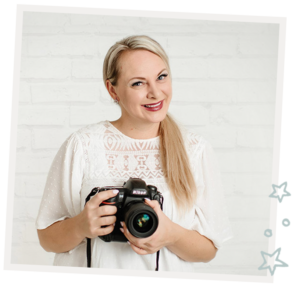
I'm
Lisa DiGeso
I’m on a mission to create uplifting online experiences for photographers ready to elevate their art, their business and their mindset.(...and have fun along the way!)




